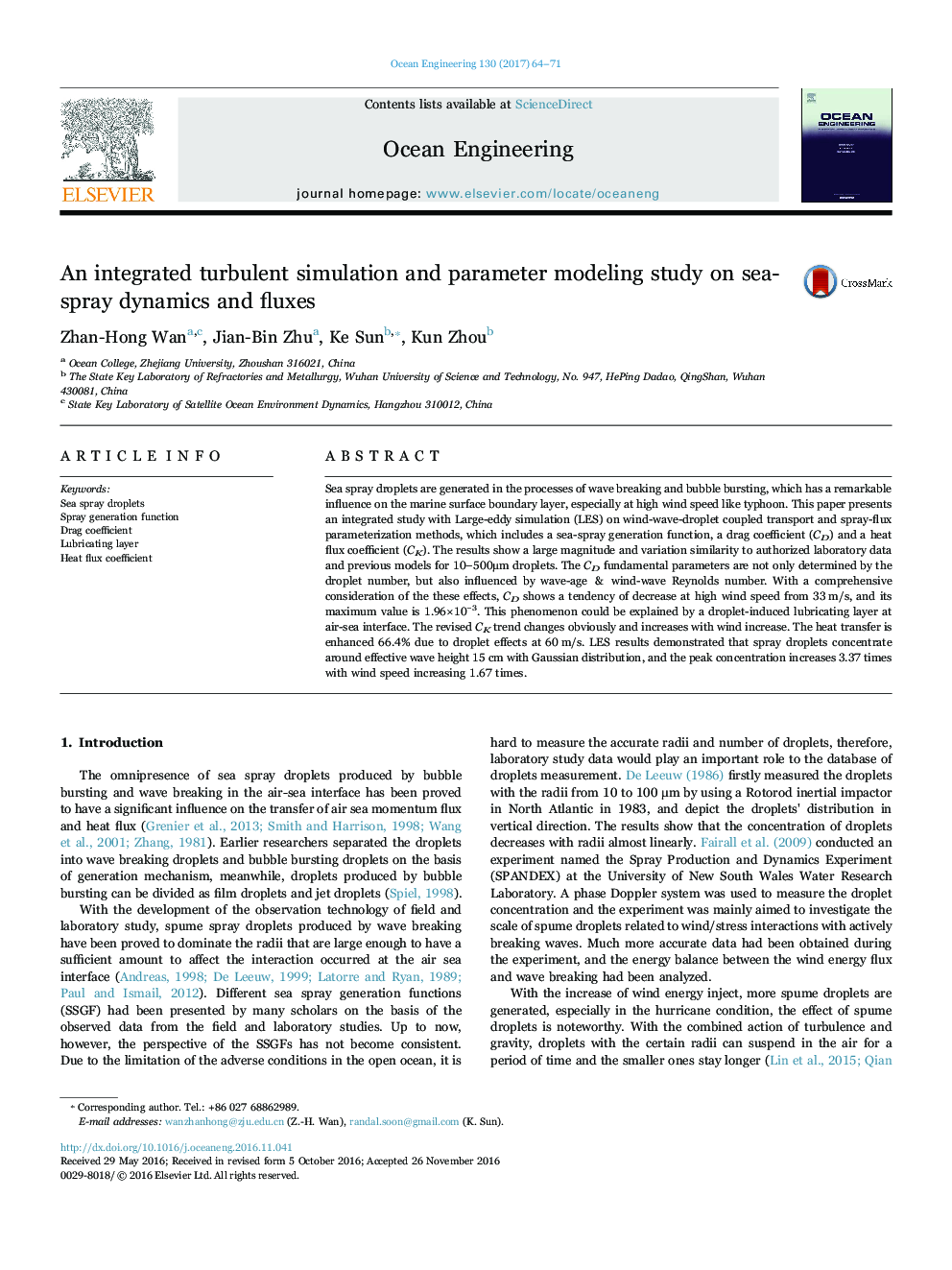| Article ID | Journal | Published Year | Pages | File Type |
|---|---|---|---|---|
| 5474613 | Ocean Engineering | 2017 | 8 Pages |
Abstract
Sea spray droplets are generated in the processes of wave breaking and bubble bursting, which has a remarkable influence on the marine surface boundary layer, especially at high wind speed like typhoon. This paper presents an integrated study with Large-eddy simulation (LES) on wind-wave-droplet coupled transport and spray-flux parameterization methods, which includes a sea-spray generation function, a drag coefficient (CD) and a heat flux coefficient (CK). The results show a large magnitude and variation similarity to authorized laboratory data and previous models for 10-500μm droplets. The CD fundamental parameters are not only determined by the droplet number, but also influenced by wave-age & wind-wave Reynolds number. With a comprehensive consideration of the these effects, CD shows a tendency of decrease at high wind speed from 33 m/s, and its maximum value is 1.96Ã10â3. This phenomenon could be explained by a droplet-induced lubricating layer at air-sea interface. The revised CK trend changes obviously and increases with wind increase. The heat transfer is enhanced 66.4% due to droplet effects at 60 m/s. LES results demonstrated that spray droplets concentrate around effective wave height 15 cm with Gaussian distribution, and the peak concentration increases 3.37 times with wind speed increasing 1.67 times.
Keywords
Related Topics
Physical Sciences and Engineering
Engineering
Ocean Engineering
Authors
Zhan-Hong Wan, Jian-Bin Zhu, Ke Sun, Kun Zhou,
